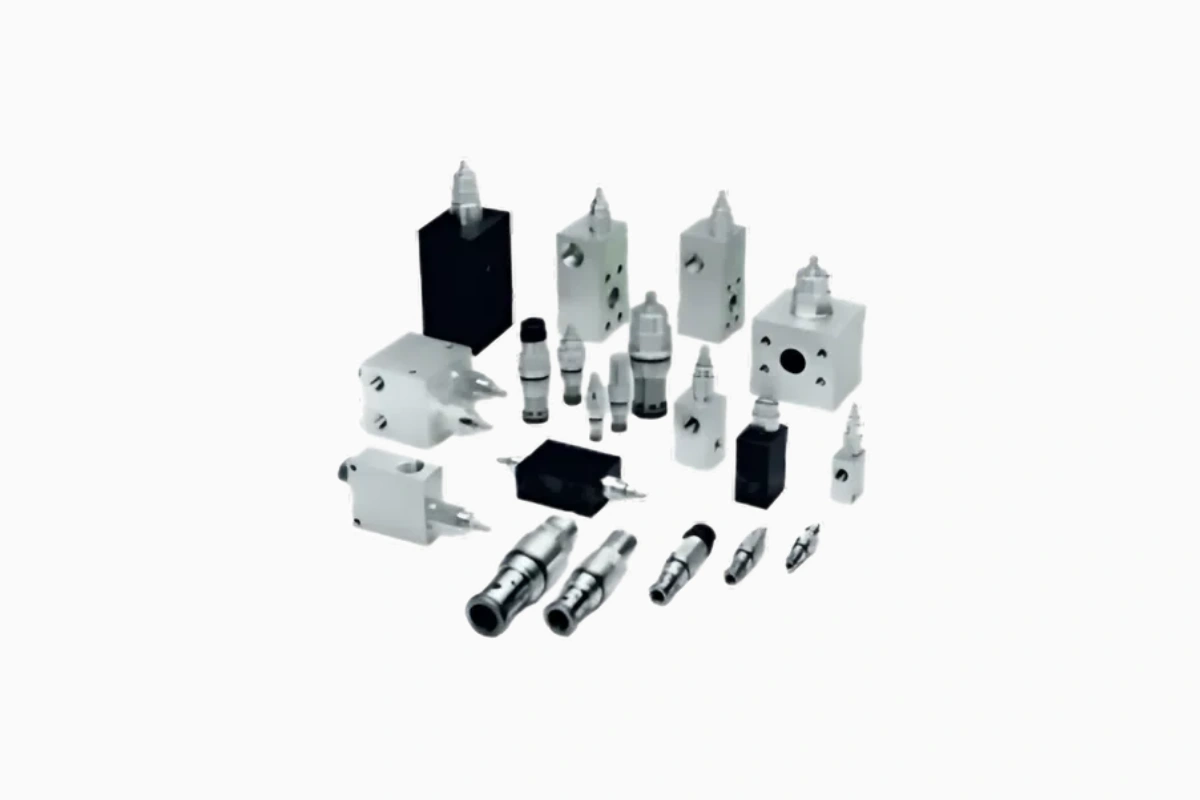Hydraulic valves are crucial components in hydraulic systems, used to regulate, direct, and control the flow of hydraulic oil within a circuit. These devices ensure the proper functioning of the system by efficiently and safely managing the pressure, flow, and direction of the fluid. Why are they important? Here’s a detailed explanation of their functions. Let’s discover the purpose of hydraulic valves.

Types of hydraulic valves and their functions
Pressure control valves
Pressure control valves are used to keep the hydraulic system within specified pressure limits. These valves are essential for preventing damage to hydraulic components and ensuring the safety of the system.
- Safety valves: Release fluid when the system pressure exceeds the preset limit, preventing failures or damage.
- Pressure limiting valves: Keep the system pressure within a specified range, avoiding sudden fluctuations.
Flow control valves
Flow control valves manage the amount of fluid flowing through a hydraulic system. By regulating the flow, these valves control the speed of actuators, such as hydraulic cylinders and motors, making the system more precise and adaptable to various operational needs.
What are their functions?
- Speed regulation: These valves are used to modulate the speed of hydraulic movements, ensuring smooth and controlled machine operation.
- Flow balancing: Flow valves help balance fluid between multiple actuators, ensuring synchronized and uniform system operation.
For more details on the different types of hydraulic valves, visit our page dedicated to Hydraulic Valves – LubeTeam Hydraulic.
Directional control valves
Directional control valves are used to divert the flow of hydraulic fluid in different directions, allowing actuators to move forward, backward, or stop. These valves act like “switches” that determine the direction of the fluid, facilitating control of machine and component movements.
There are two types:
- 2/2-way valves: These valves have two connections and two positions, and are used to open or close the hydraulic flow.
- 4/3-way valves: Used in more complex applications, these valves have four connections and three positions, allowing for more precise and flexible control of the flow direction.
Applications of hydraulic valves
Hydraulic valves are used in a wide range of industrial sectors and mobile machinery. In lifting systems, such as cranes and platforms, flow and pressure control valves ensure that loads are lifted and lowered safely and precisely. In agriculture, hydraulic valves control tools like plows and harvesters, improving operational efficiency in the field.
Hydraulic valves are also essential for construction equipment, where they are employed to control excavators, bulldozers, and other heavy machinery. These devices regulate the force and speed of operations, enhancing precision and safety in everyday tasks.

